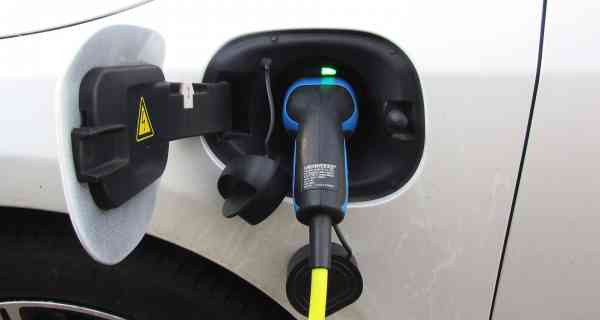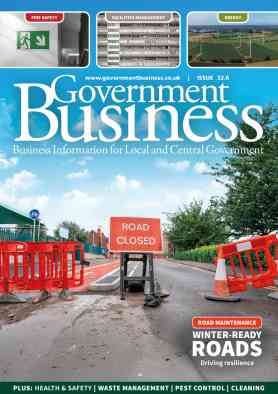Top 10: air pollution as a local problem
Recent documents have shown that more than £500,000 has been spent on failed court actions against clean air campaigners in less than 12 months. With poor air quality responsible for as many as 40,000 deaths a year, GB takes a look at the councils fighting against that statistic and improving the air quality of their towns and cities through innovation and efficiency
In March, the Environment, Food and Rural Affairs, Environmental Audit, Health and Social Care, and Transport Committees published their joint report on improving air quality amid concerns over the inadequacy of the Government's plan to improve air quality in the UK. Highlighted by a series of successful judicial challenges in recent years, the government’s target to end the sale of conventional petrol and diesel cars by 2040 has been deemed too relaxed, with the four-way report concluding that the government’s approach to tackling air quality ‘is more concerned with box-ticking and demonstrating compliance than taking bold, affirmative action’.
This follows claims last June by the Chartered Institute of Environmental Health, which accused the government’s air quality plans of ‘unfairly shifting’ the burden to solve the problem to local authorities. Nonetheless, some of the measures recommended by the government, including Clean Air Zones, although undoubtedly restricted in scope in its current form, has helped some regions work towards cleaner and greener places to live and work. Although Greener Journeys has claimed that current guidance for councils on Clean Air Zones fails to promote a shift away from car use to cleaner modes of transport, it has helped raise the issue of air quality high on the public sector agenda.
1 - Oxford City Council
In October this year, Oxford City Council and Oxfordshire County Council released a joint proposal to introduce a Zero Emission Zone in Oxford city centre. Thought to be the world’s first Zero Emission Zone, the proposal would ban emitting vehicles from the city centre in phases, starting with some vehicle types and a small number of streets in 2020 and all vehicle types across the whole city centre in 2035. To highlight the impact that such measures would have, Oxford City Council predicts that the city centre’s most polluted street, George Street, would see a 74 per cent reduction in toxic nitrogen dioxide (NO2) levels by 2035.
Oxford City Council, which proclaims itself as a cycling city, is leading the way in seeking further powers to tackle air pollution in the region, vocally at least. For example, Bob Price, leader of Oxford City Council, wrote to Chancellor Philip Hammond asking him to increase vehicle excise duty on new diesel vehicles from April 2018, and then use the money raised to help fund a diesel scrappage scheme for those on low incomes.
The council’s recently-published draft Vision 2050 set out plans to create accessible cycling routes across the city to help tackle congestion and reduce air pollution, while it has also begun a programme to install nearly 100 electric vehicle charging stations in Oxford’s residential streets to help people go electric.
2 - Cambridge City Council
Cambridge City Council has set out an ambitious new Air Quality Action Plan to improve areas of poor air quality and maintain areas of good air quality. Working closely with Cambridgeshire County Council and the Greater Cambridge Partnership, the proposed plan will include reducing local traffic emissions to meet national objectives, by increasing the number of electric and petrol hybrid taxis, reducing bus and coach emissions and reducing HGV emissions in the city centre.
Moreover, the council will use planning policies to ensure new communities are designed to make it easy for people to use sustainable modes of transport, at the same time as educating people about the health impacts of air quality and encouraging them to make changes to their lifestyles.
3 - Newcastle City Council
Newcastle City Council announced at the recent UK Bus Summit in London a new £3.3 million project to improve air quality by cutting harmful emissions from buses. The scheme will see 191 buses operating on 20 routes in Newcastle, Gateshead and North Tyneside fitted with new engine technology which significantly reduces levels of pollutants, after the three councils all submitted bids for a share of the Clean Bus Technology Fund.
The same three local authorities, among the 29 authorities required to take action as quickly as possible, also successful bid to the government’s Joint Air Quality Unit, receiving £1.7 million to make improvements to cycle and walking routes and upgrades to traffic signals which will be able to better manage the flow of traffic.
In March of this year, Newcastle City Council also installed England’s first pollution-busting ‘moss tree’ to purify air in the city centre. The moss cultures involved in the product have the ability to filter certain pollutants, by binding them to the leaf surface and then integrating them permanently into their own biomass, thus making them ideal air purifiers.

4 - Greater Manchester Combined Authority
Much of what Andy Burnham has set about achieving since becoming mayor of Greater Manchester has focused upon tackling homelessness and promoting wider devolution. However, perhaps under the radar, he has also begun transforming Manchester’s transport system - placing cleaner travel at the heart of police. Having appointed Chris Boardman as Cycling and Walking Commissioner last summer, believed to be the first major city to create such a position, Greater Manchester has seen large public support for more cycling infrastructure and incentives.
Having ruled out a clean air charge, reports such as Bike Life Greater Manchester 2017 and indeed Boardman’s Made to Move publication outline a vision for the region to become a world class place cycling and walking, seeking £1.5 billion to make this a reality. Whilst a vision does;t always transfer into policy, the GMCA is aiming to create a challenge fund of around £50 million a year from 2019 to 2021 to fund changes and further promote ‘the easiest and cheapest zero-emission means of transport’. Greater Manchester also become the first UK city-region outside London to sign up to a global standard for street designs for walking and cycling this year.
5 - Southampton City Council
As outlined in its Clean Air Strategy for Southampton, Southampton City Council expressed a desire to establish the Southampton Clean Air Zone (CAZ) on a voluntary basis, with no charging, by 2017, which it managed to do last year. As part of the same strategy, the council offers a substantial 90 per cent reduction in city-centre seasonal parking tickets to electric car owners, as well as the introduction of a network of electric charging points across the city in early 2018.
Following funding from the Office for Low Emission Vehicles, the council has also led the way nationally on offering incentives for replacing older, more polluting vehicles, particularly in its taxi fleet, and ‘no-idling’ campaigns to promote the benefits to the health of people in the immediate vicinity of switching off stationary vehicle engines.
Although no commitment has been made to carry work out further, Southampton has also a ‘Green Wall’ on the Western Approach near Millbrook Railway Station, hoping that newly planted trees, which will substantially improve the environment, will be heralded as a remedy for poor air quality.
6 - Camden Council
Across the capital, nearly 9,500 people die each year as a result of being exposed to London’s air. There are currently 22 Camden schools with Bronze, Silver or Gold STARS awards for their achievements on active travel. The Sustainable Travel: Active, Responsible, Safe accreditation scheme reduce the number of vehicle journeys to school by encouraging travel by walking, scooting or cycling, therefore tackling air quality.
Focusing on air quality near schools is a priority for the council, whose Healthy School Streets initiative looks at streets outside schools that have low levels of traffic, which could reasonably be closed to vehicles during start-of school and close-of school times without moving too much traffic elsewhere. Early indications emphasise a 3.8 per cent reduction in Nitrogen Dioxide (NO2) levels overall on school days.
Furthermore, between 2006 and 2015, Camden’s screenline data shows that cycling increased by 59 per cent across the borough while car trips decreased by 13 per cent.
7 - Liverpool City Council
In March last year, Liverpool’s Mayor, Joe Anderson, requested a report to be drawn up detailing a series of measures to tackle air pollution, including a low emissions zone targeted at diesel and large vehicles. An update in November last year showed that an initiative, branded as Breathe Liverpool, would prioritise walking, cycling, electric vehicles and clean fuels in order to reduce the impact of air pollution on residents.
As part of this, the council is planning to introduce a diesel-free fleet of council vehicles in the city centre by 2019 and across the city by 2024. They would be replaced by electric and compressed and natural gas vehicles. New buses are also being introduced next year in north Liverpool which will be able to do 130 miles on one charge. Like many other authorities, Liverpool is also stressing a no idling camping near schools and has announced that it is working with the Combined Authority to determine the costs of introducing a Clean Air Zone, which originally set a completion date of March 2018.

8 - Lambeth Council
As mentioned in Camden, a number of London boroughs have actively pursued air quality measures to combat the state of the capital’s pollution levels. At the forefront is Lambeth Council, which was successful in bidding for a Low Emission Bus Zone in Brixton Road – one London’s most polluted roads last year. Furthermore, more than 200 of the buses will be new double deck Euro VI hybrid buses. The Brixton zone is the second of 12 new Low Emission Bus Zones to be introduced at air quality hotspots, after the first zone was launched on Putney High Street in March 2017.
Having also installed a pollution-blocking ‘green screen’ at St Helen’s Primary School, Lambeth is one the capital’s most cycle friendly boroughs and hosts 200 operations Santander Cycles in the region, ‘actively’, improving health and well-being, and contributing to cleaner air. Lambeth Council has also just invested £600,000 in new zero-emission electric road sweeping vehicles, helping keep the streets clean while improving the borough’s air quality.
9 - Brighton City Council
Brighton City Council has already developed a number of successful strategies to cut air pollution, including securing government funding to fit 76 buses and 22 taxis with clean air technology and introducing a low emissions zone (LEZ) in the city centre that covers 98 per cent of bus movements. For the last few years, the council has only purchased low-emission vans and lorries, introducing fuel efficient analysis systems and conducting driver training on fuel-efficiency in its own fleet.
Having just delivered a new report to its Air Quality Programme Board, the council is now looking at ways to expand the LEZ, place tighter restrictions on vehicle emissions including taxis, and introduce the city’s first Clean Air Zone (CAZ) to improve air quality in a specific area. There is also the potential for a city-wide roll out of electric vehicle charging points to encourage a wider take up of pollution-busting electric-powered cars.
10 - Leicester City Council
As part of its Air Quality Action Plan, Leicester City Council has committed to delivering a Clean Air Zone by 2026, or sooner if possible. The plan looks to deliver improvements by introducing a low emission zone for buses by this year, and later implementing an ultra-low emission zone that would cover all vehicles larger than a motorcycle.
The first phase of a three-year programme of investment in Leicester’s Air Quality Action plan – worth over £1.1 million - was announced last year, with some of that funding set aside for the promotion of sustainable transport, working with local businesses to encourage uptake of ultra-low emission vehicles and more projects within schools to increase the number of pupils walking and cycling.



